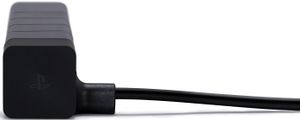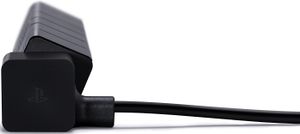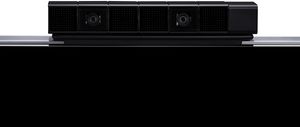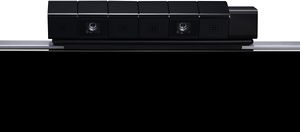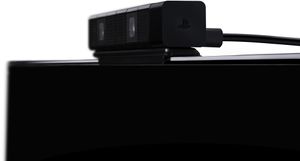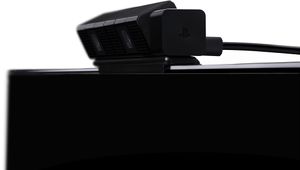PlayStation 4 Camera: Difference between revisions
Jump to navigation
Jump to search
m (-> PS4cam-USB) |
|||
| Line 133: | Line 133: | ||
{{#ev:youtube|nSxXXZTD5rc}} | {{#ev:youtube|nSxXXZTD5rc}} | ||
(The C-Note Files - Episode 13: Tutorial - PS4 Voice Recognition) | (The C-Note Files - Episode 13: Tutorial - PS4 Voice Recognition) | ||
== Project == | == Project == | ||
Revision as of 12:07, 3 October 2014
Playstation 4 Camera
See also Discussion page
RRA filing: http://rra.go.kr/board/device/view.jsp?app_no=201317100000152603 22 August 2013
File:Ps4-new-playstation-4-console-camera-07.jpg
Camera at or above knee level
Specifications
| Overview of Technical Specifications | |||||||||||||||||||||
|---|---|---|---|---|---|---|---|---|---|---|---|---|---|---|---|---|---|---|---|---|---|
| Product Code | CUH-ZEY1 | ||||||||||||||||||||
| External Dimension | approximately 186mm x 27mm x 27mm (height x width x depth) | ||||||||||||||||||||
| Weight | approximately 183g | ||||||||||||||||||||
| Cable Length | Cord length: 200cm approximately | ||||||||||||||||||||
| Connection Type | PS4 dedicated connector AUX (USB 3.0-derived) | ||||||||||||||||||||
| Capture Range | 30cm - ∞ | ||||||||||||||||||||
| Camera lens | Dual camera (move like) | ||||||||||||||||||||
| Aperture | f/2.0 /fixed focus | ||||||||||||||||||||
| Field of view (FOV) | 85° | ||||||||||||||||||||
| Video Format | RAW16/RAW8, YUV422/YUV8 (greyscale) | ||||||||||||||||||||
| Video Frame Rate |
| ||||||||||||||||||||
| Color depth | 12-bit tonal gradation (=4096 tonal levels) | ||||||||||||||||||||
| Microphone | 4 Channel Microphone Array | ||||||||||||||||||||
| Programmable settings |
| ||||||||||||||||||||
The PlayStation 4 Camera runs without user login (kernel/system device?) and depends for many of its system functions on the APU, using a tripple buffering system
Available functions
- photo, video
- voice commands (available as well with an earset with microphone)
- depth calculation/imaging
- pad, move, face, head and hand recognition/tracking
- one of the cameras can be used for generating the video image, with the other used for motion tracking.
Hardware review
- Back chip connected to Aux port is labeled OV00580-B21G-1C. The OmniVision 580 ASIC is not documented, so it seems to have been made specially for Sony out of the 500/600 serie of processors.
- The 1-megapixel Image Sensors is speculated to be an CMOS OV9713.
- Front chip connected to microphone array, labeled 5703 324A, is speculated to be a 4-channel 24-bit Analog-to-digital (A/D) converter packaged in a space-saving 28-pin QFN package.
- EEPROM is speculated to be labeled as ag51a.
Gallery
Pre E3 Playstation 4 Camera pictures
Mouseover for different pictures.
| Front | Side |
|---|---|
| Front | Side |
|---|---|
Playstation 4 Camera teardown pictures
Videos
(The C-Note Files - Episode 12: Tutorial - PS4 Face Recognition)
(The C-Note Files - Episode 13: Tutorial - PS4 Voice Recognition)
Project
- PS4 Camera on linux/OSX: https://github.com/ps4eye/ps4eye / http://ps4eye.tumblr.com/
- https://github.com/bigboss-ps3dev/PS4EYECam/ / http://bigboss-eyetoy.blogspot.co.uk/2014/09/ps4eyecam-released.html
(The PS4 camera is USB 3.0 only and is not compatible with USB 2.0 systems. See also AUX page)
External references
Generic
- http://en.wikipedia.org/wiki/Computer_stereo_vision
- Gesture recognition: Enabling natural interactions with electronic
- Softkinetic Patent: Computer video-game system with body position detector

